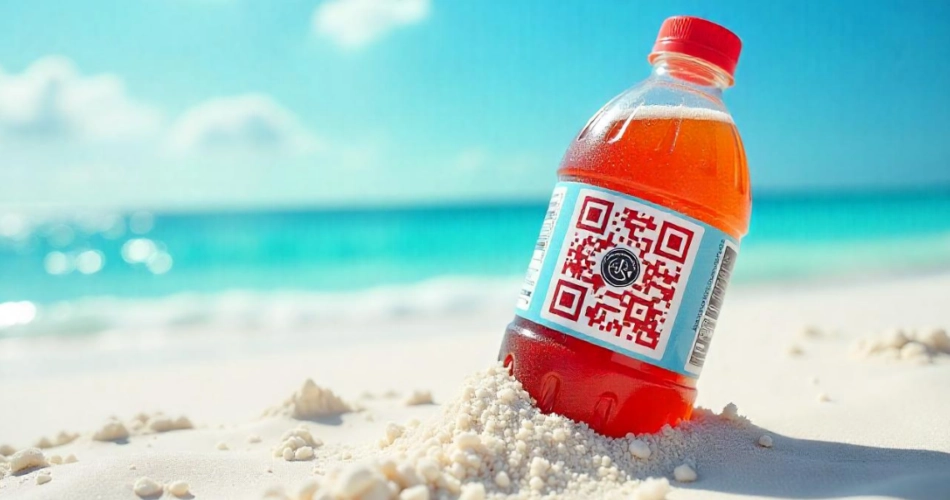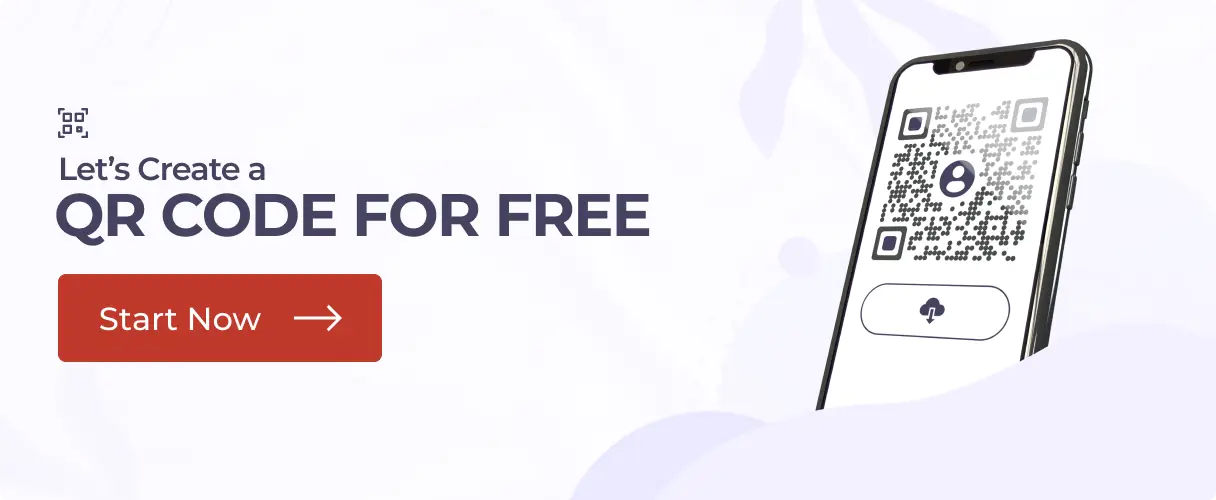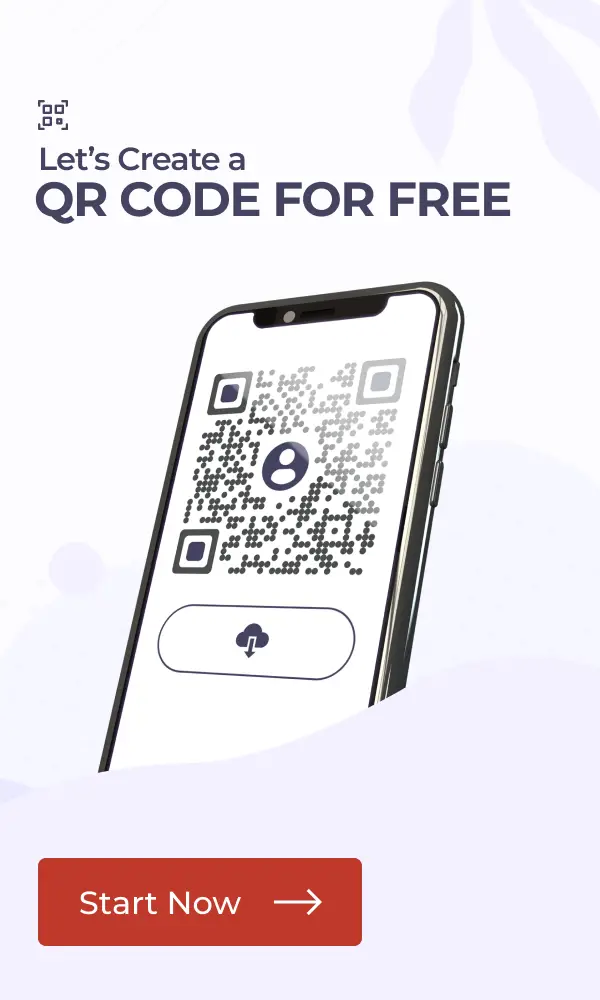Did you ever point your camera phone at a bottle’s QR Code and end up on an unexpected discount, an off-stage company narrative, or a product genuineness scan?
If so, you are missing out on one of the most groundbreaking marketing and customer engagement trends.
From drink manufacturers optimizing the customer experience to drugmakers validating product security, QR Codes on bottles change how businesses connect with consumers.
Whether you’re a brand seeking to increase engagement or a consumer seeking more transparency, QR Codes on bottles are the connection between the physical and digital worlds.
In this blog, we will look at how various industries applies QR Code on bottle, their advantages, and how you can use them successfully.
A. Why are brands adding QR Codes to bottles?
Bottles with QR Codes are a brand initiative to engage with customers, increase transparency, and improve interaction, not merely a new technological advancement.
The following explains why brands are using them:
1. Instant access to product information
Brands give source information, nutritional content, and ingredient details through QR Codes. This is a must for food, beverage, and pharmaceutical companies where transparency is trust.
2. Authenticity verification
A significant problem is counterfeiting, especially concerning expensive medications, cosmetics, and alcoholic beverages. By scanning a QR Code, customers may verify authenticity and avoid buying fake goods.
3. Interactive marketing & promotions
QR Codes on packaging can prompt promotion benefits, loyalty rewards, or engaging brand experiences. Drink brands commonly utilize them for sweepstakes, unique content, or AR experiences.
4. Sustainability & paperless packaging
Rather than long labels and booklets, brands keep extra information in digital form with QR Codes. This minimizes packaging waste but still delivers information required by law and for safety.
5. Seamless reordering & e-commerce integration
With one scan, users can be led to an online store by a brand where they can easily reorder. It is convenient for products consumed every day, such as bottled water, supplements, or specialty beverages.
6. User engagement & social media connection
Brands utilize QR Codes to point to social media, customer comment forms, or community programs and get customers involved in something beyond the purchase.
The global reusable water bottle market size was estimated at USD 9.67 billion in 2024 and is expected to grow at a CAGR of 4.6% from 2025 to 2030. Source: grandviewresearch
B. Types of QR Codes you can use on bottles
Brands can use different QR Codes on bottles based on their goals—sharing product details, boosting engagement, or ensuring authenticity. Here are the key types:
1. Website QR Codes
These lead customers to a product page, brand site, or an online store for easy shopping and additional information.
2. Authentication QR Codes
Counterfeiting is a serious issue, particularly when it comes to pricey drugs, cosmetics, and alcoholic drinks. Customers may check authenticity and avoid purchasing counterfeit goods by scanning a QR Code.
3. Nutritional & ingredient QR Codes
Rather than overwhelming labels with text, companies utilize QR Codes to deliver in-depth nutritional facts, sourcing information, and allergen data.
4. Promotional & discount QR Codes
These QR Codes release special discounts, cashback deals, or rewards from loyalty programs, promoting repeated buys.
5. Sustainability & recycling QR Codes
Green-conscious companies include QR Codes that teach customers how to dispose of, recycle, or support sustainability causes properly.
6. Reorder & subscription QR Codes
With just one scan, these QR Codes enable instant reordering or subscription sign-ups for consumable goods like juices, vitamins, and bottled water.
C. How do QR Codes on bottles improve customer experience?
Beyond simply adding a tech-savvy touch, QR Codes on bottles facilitate more engaging, intelligent, and seamless interactions. They improve the client experience in the following ways:
1. Easy access to product information
Customers may instantaneously examine nutritional facts, ingredients, sourcing information, and allergens by scanning a QR Code rather than staring at small labels. This is especially helpful for supplements, food, and drinks.
2. Faster authentication & trust building
With only one scan, QR Codes may assist in ensuring the authenticity of high-end spirits, skincare items, and medications, lowering the possibility of fake goods and increasing consumer trust.
3. Exclusive deals & rewards
QR Code-enabled bottles can release discounts, cashback, or loyalty programs, rewarding customers while stimulating repurchases.
4. Seamless reordering & subscriptions
Need a refill of a favorite drink or supplement? A QR Code can send shoppers directly to a website for instant reordering, eliminating effort and time.
5. Interactive & immersive brand experiences
AR-enabled QR Codes make bottles into interactive platforms, providing virtual product tours, behind-the-scenes material, or game-like experiences. This strengthens the brand-customer bonding.
6. Sustainability & recycling guidance
Environmentally conscious consumers value QR Codes with proper recycling information, upcycling suggestions, or data about the sustainability initiatives of a brand.
7. Effortless social media & feedback integration
Scanning allows customers to follow a brand on social media, review, or complete surveys, making engagement more natural and convenient.
The U.S. reusable water bottle market is expected to grow at a CAGR of 4.5% from 2025 to 2030. Source: grandviewresearch
D. Real-life brands using QR Codes on bottles
Numerous leading brands have adopted QR Codes on bottles to drive customer engagement, guarantee authenticity, and open up instant access to details. Here are some prominent examples:
1. Coca-Cola
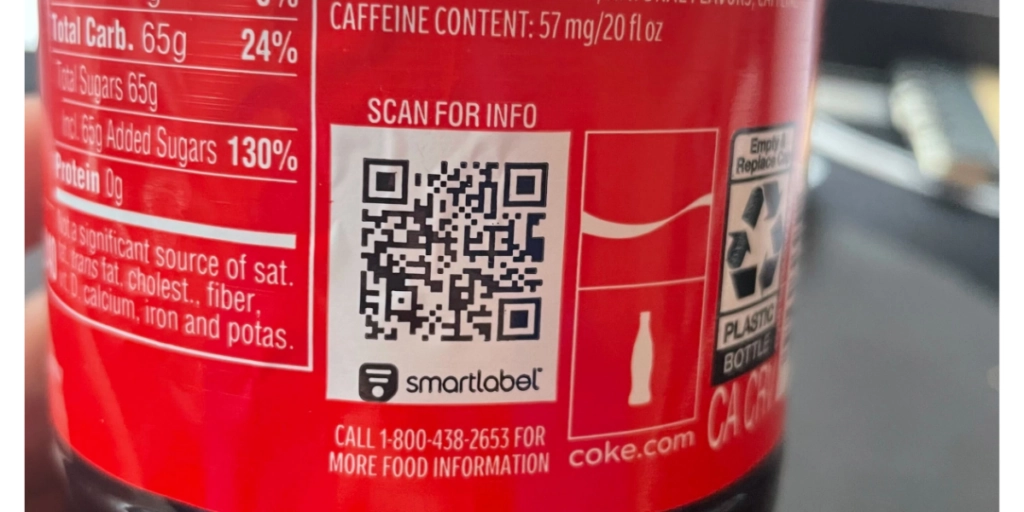
Coca-Cola utilized QR Codes on bottles to advance customized campaigns, like “Share a Coke,” where the code scan took the customer to a personalized name generator. They have also employed QR Codes for sustainable initiatives, where consumers were driven to recycling schemes.
2. Heineken
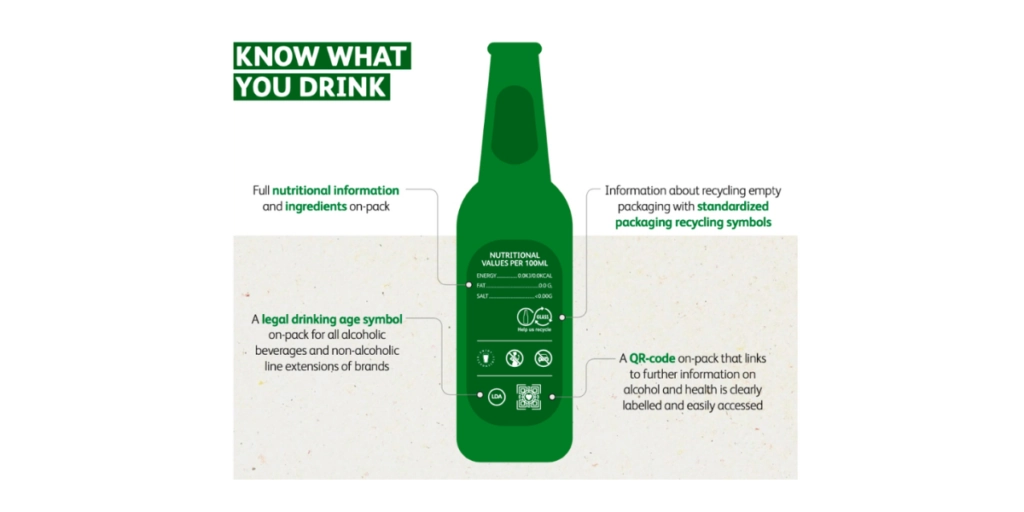
Heineken combines QR Codes on bottles to access immersive AR experiences, behind-the-scenes brewery tales, and responsible consumption guidelines, persuading consumers to make well-informed decisions.
3. Jack Daniel’s
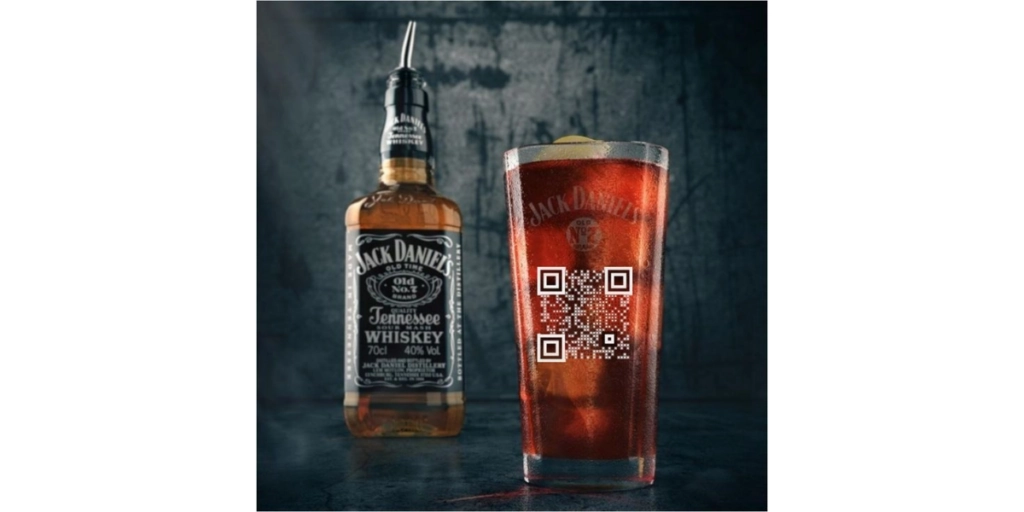
Customers can access a virtual distillery tour via the QR Codes on Jack Daniel’s whiskey bottles, which include details on the company’s history, workmanship, and product verification.
4. Evian
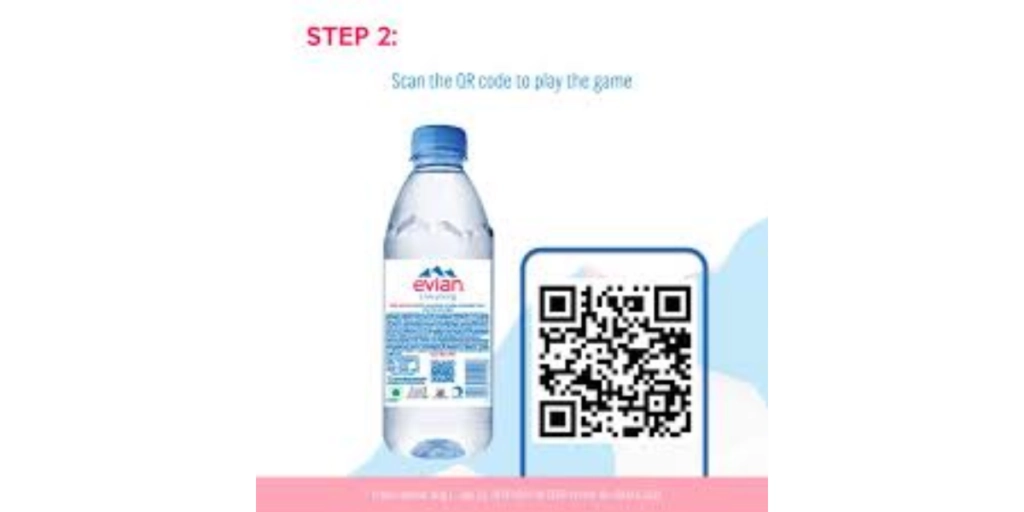
Evian, a high-end bottled water company, uses QR Codes to emphasize its greenness and educate customers about its recycling and environmental initiatives.
5. Johnnie Walker
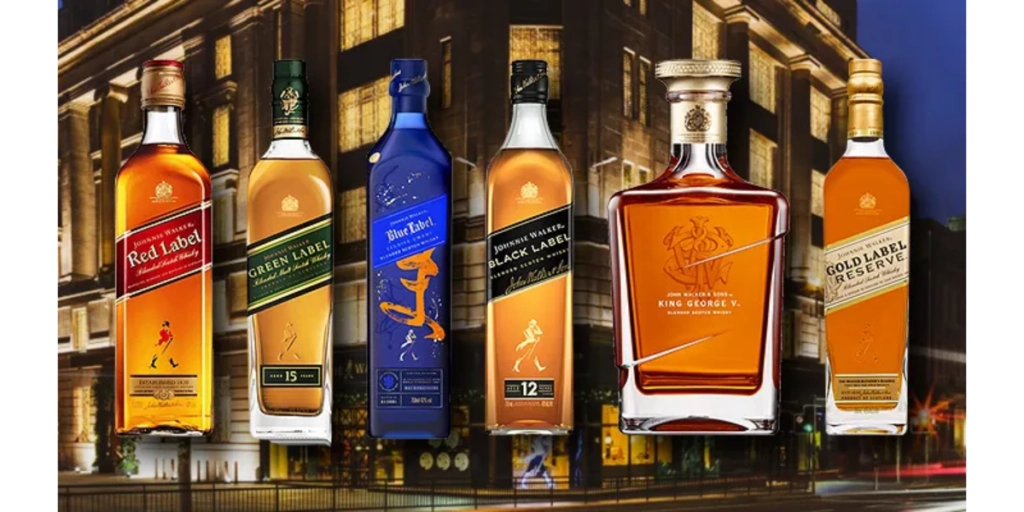
With the help of QR Codes, Johnnie Walker has introduced “smart bottles” that offer dynamic content, including personalized messages, cocktail recipes, and authenticity verification.
6. Nestlé Pure Life
Customers can choose which water to drink by using Nestlé Pure Life’s QR Codes on water bottles, which provide real-time water quality readings.
7. Gatorade
To help athletes perform at their best and consume more water, Gatorade has tried placing QR Codes on bottles that direct customers to applications that track hydration.
8. Corona
Customers may learn about environmental activities and support sustainability projects thanks to Corona’s use of QR Codes to promote its ocean cleanups.
E. How do QR Codes on bottles help combat counterfeiting?
Drugs, alcohol, and high-end packaged goods are among the markets where counterfeiting is a major problem.
In addition to harming a brand’s reputation, the fake goods seriously endanger customers’ health.
QR Codes on bottles offer an effective solution for instant authentication and tracking.
Here’s how:
1. Unique, tamper-proof codes for each bottle
Brands employ dynamic QR Codes with a distinct serial number for every bottle. Scanned, these codes lead consumers to a secure database to check authenticity. The system detects a counterfeit attempt if there is a copy or invalid QR Code.
2. Blockchain-based authentication
Some brands integrate QR Codes with blockchain technology. This gives an irrevocable history of the source of the product, production details, and distribution channel, which any counterfeiters cannot emulate.
3. Consumer verification in seconds
Through a rapid scan, consumers can check if the product is genuine. The QR Code can lead them to an official authentication website displaying product details, batch number, and date of manufacture, which instantly assures buyers.
4. Supply chain tracking & anti-diversion control
Brands can monitor their supply chain in real-time with QR Codes. Brands can detect illegal reselling, smuggling, or grey market activity by monitoring bottles at every stage, from manufacturing to retail.
5. Instant alerts for counterfeit products
If a customer scans a QR Code on an imitated bottle, brands can receive instant alerts about hotspots of counterfeiting. Such information identifies trouble spots and initiates legal action against fake operations.
6. Tamper-evident packaging integration
Certain brands integrate QR Codes in tamper-evident labels. When the seal is disturbed or tampered with, the QR Code is altered, indicating to consumers that the product might be tampered with.
7. Consumer education & awareness
QR Codes enable brands to instruct consumers on how to detect counterfeit products. Scanning can result in an instruction manual for authentication procedures, packaging variations, and security characteristics.
F. Sustainability and QR Codes: How bottles are going digital
As companies strive for environmentally friendly packaging, QR Codes on bottles are essential for cutting waste, enhancing recycling, and encouraging sustainability.
Here’s how they help:
1. Reducing label waste
Bottles from old times are packaged with long printed labels with reams of product information. QR Codes cut through unnecessary text so that brands can reduce labels to a minimum size or use bare-bones packaging—serving paper and ink.
2. Providing digital recycling instructions
QR Codes guide people in recycling properly by directing users to disposal guidance, bottle deposit schemes, and nearby recycling plants. Some even use them to teach people reusability techniques and upcycling suggestions.
3. Eliminating paper manuals & booklets
Product information leaflets or booklets usually come with pharmaceutical, beverage, or cosmetic brands. QR Codes eliminate them with their digital counterparts, saving paper while making access simple.
4. Encouraging bottle return & refill programs
Firms like PepsiCo and Coca-Cola use QR Codes to encourage bottle return programs. Consumers scan the code to find the nearest return facility or refill point, encouraging the circular economy.
5. Tracking carbon footprint
Several brands use QR Codes to reveal the carbon footprint of a product so that environmentally aware consumers can make smart purchasing decisions. Scanning the code can reveal the emissions levels, green initiatives, or information regarding how a brand cancels out its footprint.
6. Verifying sustainable sourcing
Consumers today demand transparency about ingredients and sources. QR Codes take users to sustainability reports, ethical sourcing details, and certifications (e.g., Fair Trade, FSC, or Rainforest Alliance).
7. Powering smart packaging & IoT integration
Brands may monitor product lifecycles, promote responsible consumption, and include customers in sustainability challenges or incentive programs using QR Code bottles.
Final thoughts
QR Codes on packs are transforming packaging through increased transparency, interaction, and sustainability. They offer quick product information, authenticate products, and link consumers to brands easily.
For optimum impact, brands must implement precise placement, mobile-opted content, and an appealing call to action.
As expectations on consumers shift, QR Codes become not only desired but essential—a future for ground-breaking packaging.
